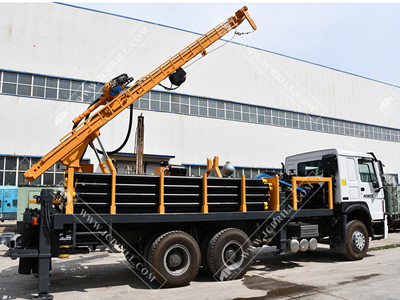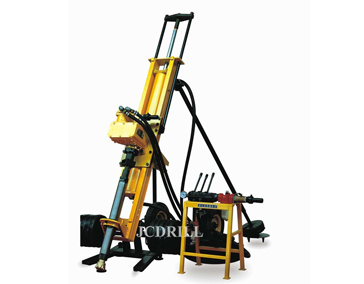What are different types of drilling rigs?
Rotary drilling rigs are used for most drilling operations today. The hole is drilled by rotating a bit and applying a downward force. Generally, the bit is turned by rotating the entire drill string, using a rotary table or a Top drive at the surface, and the downward force is applied to the bit by using a heavy thick-walled pipe, called drill collars, in the drill string above the bit.
The cuttings generated by drilling are lifted to the surface by circulating a drilling fluid down the drill string, through the bit, and up the annular space between the hole and the drill string. The cuttings are separated from the drilling fluid at the surface.
Rotary drilling rigs can be classified as land rigs and marine rigs. The main features of land rigs are portability and maximum operating depth. Land rigs are built so that the derrick can be moved easily and reused for drilling new holes. The various rig components are skid-mounted so that the rig can be moved in units and connected easily. The jackknife, or cantilever, derrick is assembled on the ground with pins and then raised as a unit using the rig-hoisting equipment.

CSD300 Hydraulic Rotary Truck Mounted Borehole Drilling Rig
The portable mast which is suitable for moderate depth wells usually is mounted on wheeled trucks or trailers that incorporate the hoisting machinery, engines, and derricks as a single unit. The telescoped portable mast is raised to the vertical position and then extended to full height by hydraulic pistons on the unit.
The main features of the marine rigs are portability and maximum water depth operation. Submersible drilling barges generally are used for inland water drilling where wave action is not severe and water depths are less than 20 ft. The entire rig is assembled on the barge, and the unit is towed to the location and sunk by flooding the barge.
Once drilling is completed, the water is pumped out from the barge, allowing it to be moved to the next location. After the well is completed, a platform must be built to protect the wellhead and support the surface production equipment.

Rock Blasting Drilling Rig
When water depth is less than about 350 ft, jackup can be used. The jackup is bottom supported rig using metallic legs. On location, the legs are lowered to the bottom and the platform is jacked up above the wave action by means of hydraulic jacks.
Semisubmersible rigs are more expensive than jackup rigs and, thus, are used mostly in water depths too great for resting on the bottom. Semisubmersible rigs employ large engines to position the rig over the hole dynamically. This can extend greatly the maximum operating water depth. The shape of semisubmersible rigs tends to dampen wave motion greatly regardless of wave direction. This allows its use in areas where wave action is severe.
The second type of floating vessel used in offshore drilling is the drillship. Drillships are designed with the rig equipment and anchoring system mounted on the central turret. The ship is rotated about the central turret using thrusters so that the ship always faces incoming waves. This helps to dampen wave motion.
Let us help you find the different types of drilling rigs for your project. When you contact us, please provide your detailed requirements. That will help us give you a valid quotation.
评论
发表评论